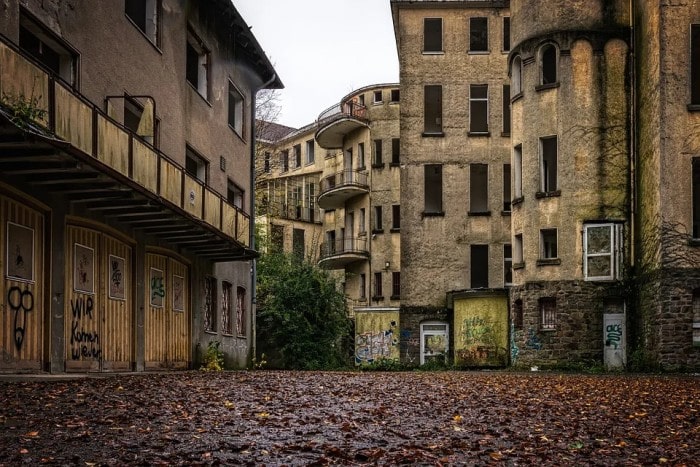
A dilapidated building is a term used to describe a building that is likely to collapse. Dilapidated buildings are generally considered unsafe to enter and they are likely to be a risk to the general public.
These types of buildings occur as a result of years of neglect. There are many reasons why a building may be neglected and left unloved. The end result will always be the same although the amount of time it takes to become dilapidated will depend on a wide array of factors.
What To Do About A Dilapidated Building
Just because a building is in a bad state doesn’t mean that you should, or even can, tear it down.
This is one option but you’ll need to verify with the state that the building doesn’t have specialist status. If it does you may not be able to tear it down.
A better option is to restore it, potentially improving it in the process. You may find there are grants available to help you restore the building, especially if it is of historical or cultural significance.
However, before you can make any plans you’ll need a professional building consultant Sydney to take a look.
Dilapidated buildings require a great deal of work to be restored or rebuilt. A detailed survey by a building consultant will allow you to see exactly what needs doing, including the deterioration in the structure.
This is an essential step in identifying the work to be done and giving yourself the opportunity to create a budget.
Assuming the work can be done, you’ll be able to use the building survey to start putting prices together.
The options are to oversee everything yourself and hire individual contractors as and when needed. Alternatively, you can commission one firm to do all the work.
The second option allows you to request a quote that will list all the work that needs to be done and the cost of it. Of course, even with a quote, there are likely to be unforeseen issues that will cost more. Add at least 30% to the quote when preparing your budget.
If you oversee it yourself it may be harder to get a feel for the price before you start. But, one thing is certain, in both cases it will cost more than you originally think.
Once you’ve decided that you can afford to undertake the repairs you’ll need to check that you have all the necessary permissions before you, and your contractors, start working.
If the cost of restoring the dilapidated building is too high you’ll have to consider knocking it down, (if possible) or selling the property to someone who can afford the repairs. Again, this will depend on it’s cultural and even sentimental significance.
It’s unlikely the state will simply allow you to hang onto it and not repair it. At the least, they will insist it is made safe, and you’ll have to cover the cost of that.
